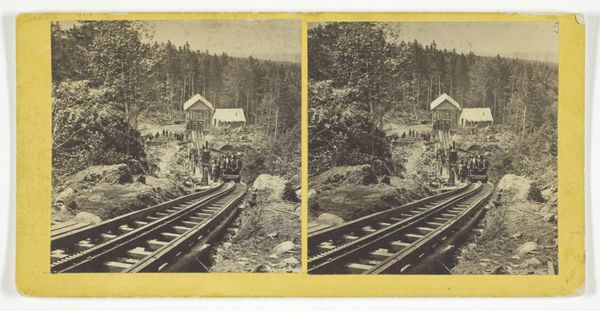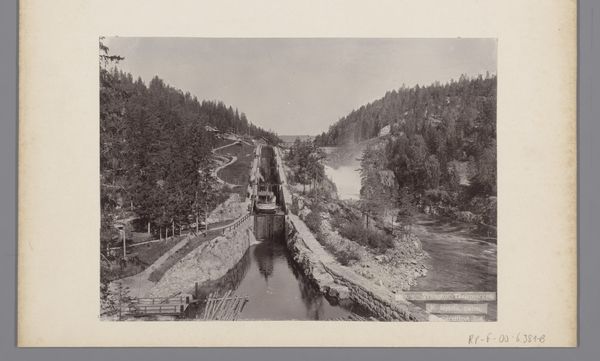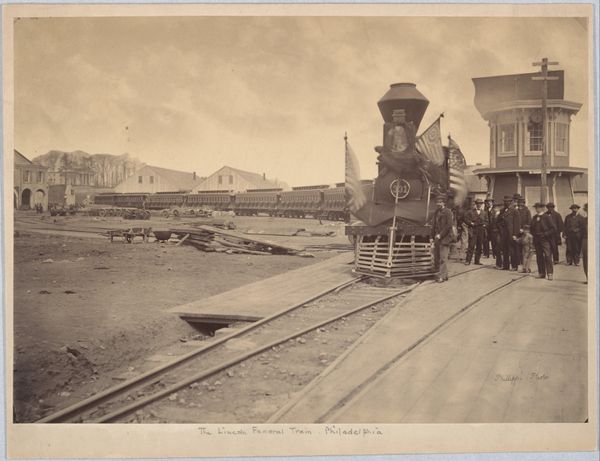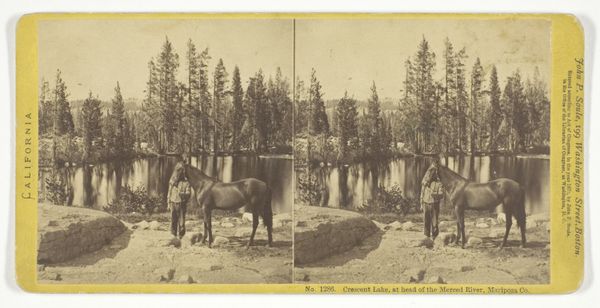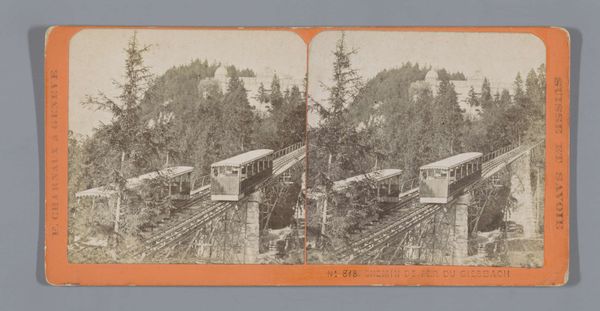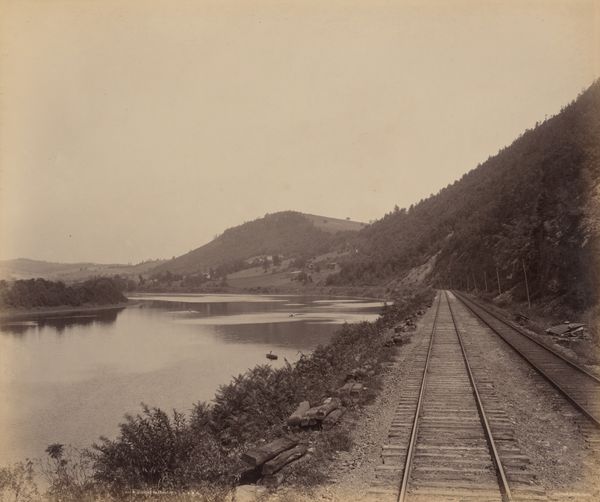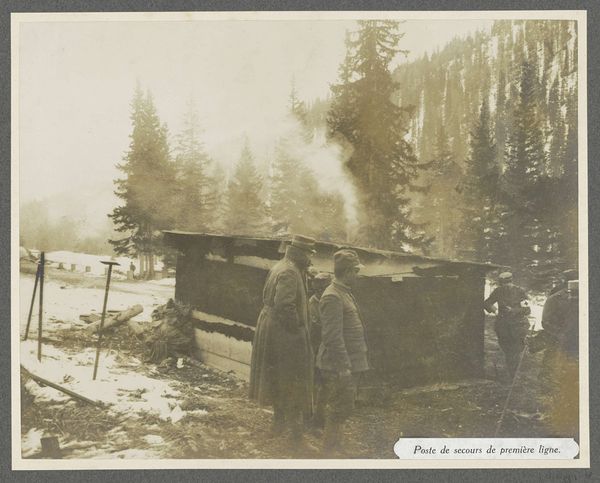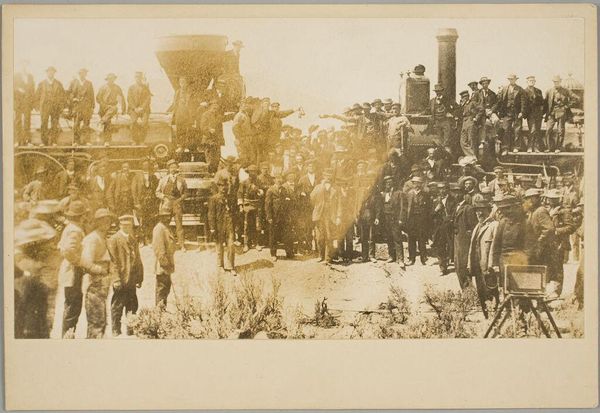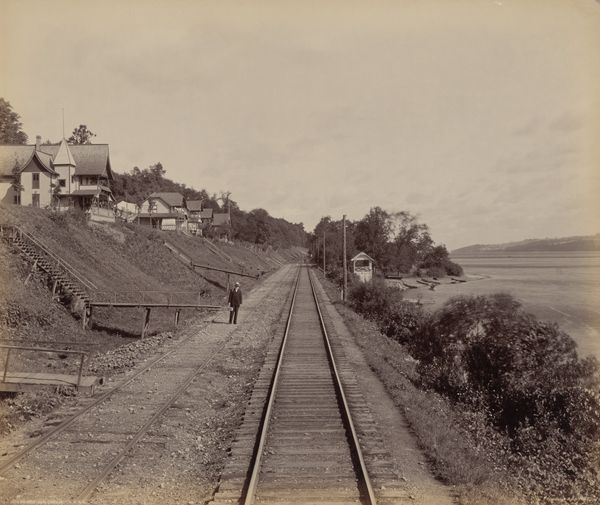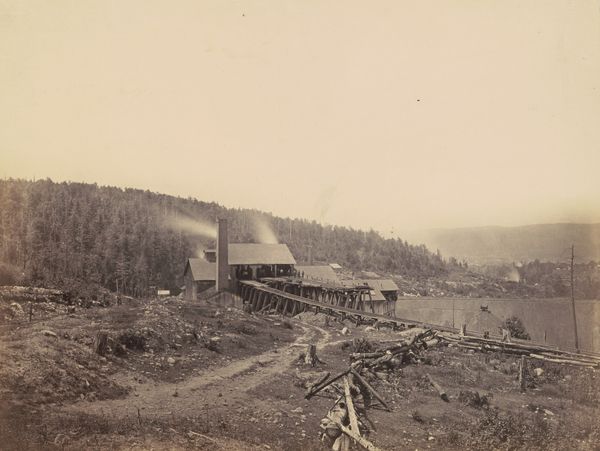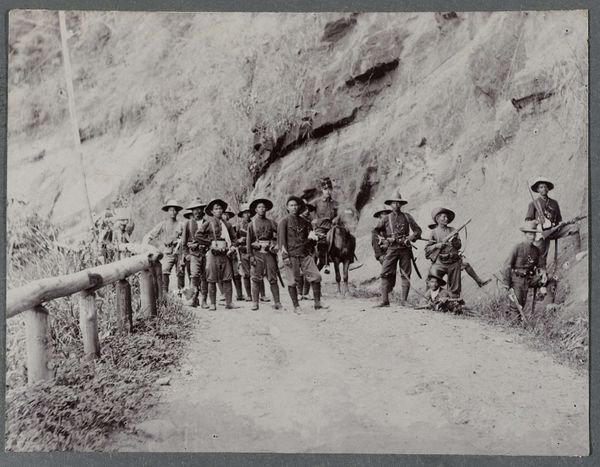
photography, gelatin-silver-print
#
portrait
#
landscape
#
photography
#
group-portraits
#
gelatin-silver-print
#
genre-painting
#
realism
Dimensions: height 130 mm, width 210 mm
Copyright: Rijks Museum: Open Domain
Curator: What strikes me immediately is the rather melancholic stillness permeating this gelatin-silver print. The sepia tones give it that sense of faded memory. Editor: Absolutely. There’s a formality to it, despite its humble subject matter. We’re looking at “Spoorwegarbeiders poseren op handcar op het land van M. Hanbury,” or, “Railway Workers Posing on a Handcar on the Land of M. Hanbury,” taken sometime between 1890 and 1900. It was shot by Boorne & May, a studio based in Calgary, Alberta, in what was then the Northwest Territories. Curator: The workers are centrally placed in the photograph, creating a static balance, their poses direct and rather serious. This symmetry underscores the importance of their collective labour and unity. Editor: They look incredibly posed, don't they? Like figures arranged for a tableau. But there's something real and engaging about their faces, a rawness and a pride. Their individual stances create an ensemble that transcends the mere ‘group portrait’ tag we see. Curator: Yes. It almost feels ceremonial. The handcar, an essential instrument, becomes an altar or a stage for their combined strength. And behind them, the landscape offers more context and tells us something about the terrain they helped to tame. Editor: The eye is lead by the railroad tracks toward the background and then slightly upward on the embankment that the train tracks pass along. The landscape feels expansive, though. These individuals and their combined work were carving the landscape for settlement and distribution of resources. I’m also wondering, what were they like as individuals, away from their backbreaking labor and ever reaching infrastructure projects? Curator: I completely agree. In their expressions, a profound story about working-class identity in the 19th century is recorded for generations to come. It underscores a particular socio-economic landscape of the late 1800s as society was being connected through railways and other industrial-age infrastructure. Editor: Exactly. This single frame reminds us of a whole narrative arc around settlement. Curator: Agreed, so many symbols in one picture. Editor: Beautiful, wouldn’t you say?
Comments
No comments
Be the first to comment and join the conversation on the ultimate creative platform.
